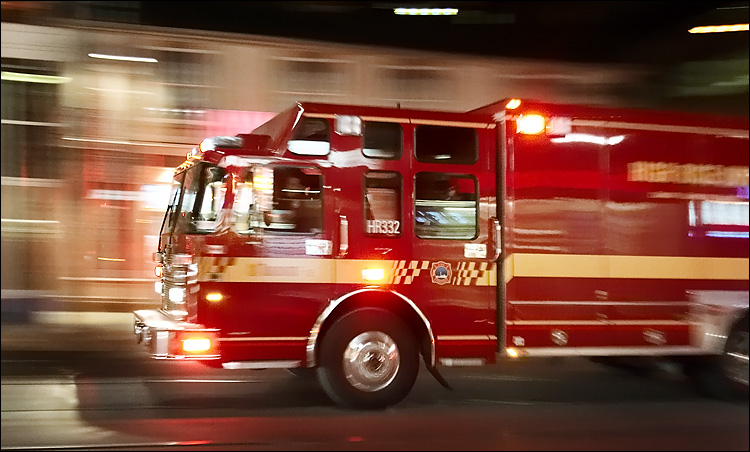
Creating a Safer Public Safety Network
Published on May 14, 2019

By: Jonathan Kaye – Senior Director Product Management at Ezurio
The First Responder Network Authority (FirstNet) is a federal agency that oversees the building, deployment, and operation of a nationwide public safety broadband network. This wireless network aims to provide first responders, such as law enforcement and firefighters, with a reliable connection – even in the most difficult of circumstances and environments.
Public safety networks are being upgraded with the buildout of the National Public Safety Broadband Network (NPSBN) and the first priority use of the LTE Band 14 spectrum. The 4G LTE public safety spectrum utilizes a lower frequency 700 MHz band (LTE Band 14) to offer data and eventually, voice over LTE, providing mission critical communications in a single end user device. Deploying 4G LTE FirstNet nationwide comes with many challenges, particularly for locations with interference issues. To ensure that the LTE FDD 14 wireless devices deliver the right public safety-related features at the right time, special attention to the development and installation of in-building distributed antenna systems (iDAS) is vital.
Network Architecture
The 4G LTE FirstNet network consists of two components:
- A core network of data centers that provides the required connectivity between radio access networks and the public Internet and/or the public switched network
- Radio access networks that consist of cell site equipment, antennas, and backhaul equipment that enable wireless communications with devices using the public safety broadband spectrum
FirstNet and AT&T are responsible for building the core network, while municipalities and states are tasked with developing and managing the RAN components.
FirstNet Challenges
Improving FirstNet and creating a reliable national public safety network faces many hurdles. Responders need dependable communication services, even in areas with little-to-no cellular coverage. FirstNet and AT&T must deliver adequate coverage throughout the US.
Public safety networks still utilize a wide range of technologies such as 350-520, 600-960, 1350-1550, and 1690-6000 MHz for UHF, 2G/3G/4G Cellular, UMTS/AWS-3, CBRS, and Wi-Fi frequency bands. The iDAS infrastructure must work with all technology standards to consistently ensure proper functionality and communication. As AT&T continues to work with states to upgrade existing networks and implement 4G LTE coverage across, wireless device and technology manufactures must keep up.
Another challenge is that each public safety communication system is controlled by a different local municipality. Meaning each RAN system has its own set of minimum performance requirements including minimal signal strength. Emergency radio access networks do not always adequately provide wireless coverage inside buildings. This is why in-building distributed antenna systems are required.
DAS Solutions
Distributed antenna systems (DAS) is a network of antenna nodes that provides wireless service within a geographic area or structure. DAS elevations are generally at or below the clutter level, with compact node installations. Public Safety in-building DAS improve indoor public safety connectivity by bringing UHF/3G/4G/FirstNet radio signals inside buildings.
Proper antenna selection helps ensure the call quality and connection speeds expected in hospitals, universities, and other public venues. High quality iDAS utilize omnidirectional antennas to provide pattern coverage optimized for public safety applications and requirements.
New technology developments have enabled manufacturers to design ultra low-profile iDAS antennas. Antennas like the 7.6 millimeters thick CFSA35606P from Ezurio provide buildings with an inconspicuous yet high performance antenna for enhanced wireless connectivity. Ultra low-profile antennas engineered specifically for public safety and FirstNet applications should be designed optimally. Because the traditional serial optimizers take a lot of time to converge to an optimal solution, a less than optimal, but adequate, design is achieved. Ezurio's (formerly Laird Connectivity) proprietary AIO (Artificial Intelligence Optimizer) software addresses this issue so that a true convergent solution is achieved in a fraction of the time. What does this mean to the iDAS network? The AIO software offers significantly more advanced capabilities to improve wireless range. AIO software is now being used to design antennas for specific FirstNet in-building applications.
Conclusion
FirstNet and AT&T are working to develop a singular public safety LTE network. This network promises to be a dramatic leap in performance over what is being used by emergency responders today. The next wave of public safety communications equipment must support a wide variety of applications, including UHF/3G/4G and more. This includes in-building distributed antenna systems that enable first responder organizations and building owners to meet the requirements of FirstNet public safety communications.
 Laird Connectivity is now Ezurio
Laird Connectivity is now Ezurio